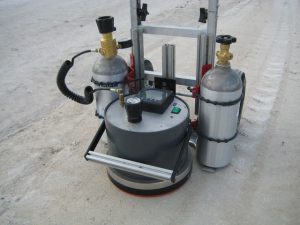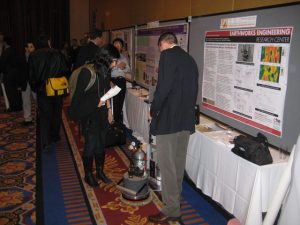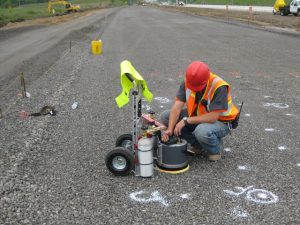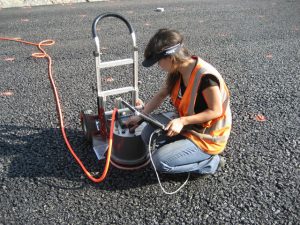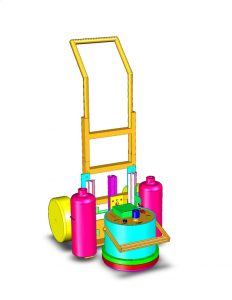Project Details
NCHRP Highway Innovations Deserving Exploratory Analysis (IDEA) program
Researchers
Alice Alipour
alipour@iastate.edu email >Structure and Infrastructure Engineer, BEC
About the research
The cantilevered-arm traffic structures (e.g., structural supports of signs, luminaires, and traffic signals) are an integral part of the transportation systems. The cantilevered form of these structures are prone to fatigue failures at the base of the cantilevered elements as there is no provisions for fatigue in that specification. This is attributable to the lack of consideration of fatigue in the design of these structures and to the wind environment that can induce galloping, vortex shedding, wind gusts, and truck-induced gusts. These structures’ low mechanical damping (0.1–0.4%) is known to contribute to this type of behavior. While much research in recent years has been focused on development of vibration mitigation strategies or design of connections that are fatigue-rated, less attention has been given to the natural performance of these structures when exposed to the natural wind environment.
This project considers the “aerodynamic damping” as an active means to mitigate the large amplitude vibrations of these structures. The proposed method is superior to the other common approaches, as it uses the inherent characteristics of the traffic light (specific dimension ratios) to ensure that the aerodynamic damping is maximized during the gust events. It’s unique in the sense that it will not require specific tuning (like those required for non-aerodynamic vibration mitigation systems), or implementation of the heavier fatigue-rated connections. The tests that were conducted in the Wind Simulation and Testing (WiST) Laboratory have shown that the proposed approach will help improve the performance of traffic signal structures. In these studies, tests on two different traffic light configurations were conducted. Then, physical characteristics of traffic lights was changed to reach the maximum possible aerodynamic damping at each instance. This in turn has resulted in rapid damping of the large amplitude motions. A traffic signal structure was then monitored in the field. The information collected from the field were then used to assess the impact of the traffic light modification on the response of the traffic light structure in in-plane and out-of-plane directions.
The implementation of the proposed dimensional characteristics in design of traffic lights and traffic signal structures is an excellent opportunity to address the longstanding issue of fatigue-related failures in these structures. The economic implications of this approach are huge considering the millions of these structures that are being maintained by cities and state DOTs. The implementation of the proposed strategy in design of the traffic lights and traffic signal structures will ensure longer life time for these structures while eliminating the costs associated with possible failures, the user costs imposed due to failures, and costs associated with the replacement. The proposed strategy is expected not to increase the fabrication costs of these structures. The proposed approach is expected to have a larger impact when the concept is extended to other traffic structures such as structural supports for signs and luminaires.
Researchers
David White
Charles Jahren
Heath Gieselman
Don Eichner
La Zhao
About the research
Rapid determination of the in-situ hydraulic conductivity for pavement subbase/base layers is critical to ensure that the constructed product meets the design and performance expectations. Currently, no widely accepted specifications or test methods exist for QA/QC of in-situ hydraulic conductivity. This research project produced a ruggedized and repeatable test device known as the Gas Permeameter Test (GPT) for rapid in-situ determination of hydraulic conductivity using an innovative approach based on gas flow measurements through the partially saturated material. The newly developed GPT measures hydraulic conductivity in less than 30 seconds, has a measurement range of about 10 -4 to 10 cm/s, is completely self contained, and was validated for several different materials. Because rapid measurements can be made in the field, measurements collected in a grid pattern can be used to produce color-coded spatial maps of hydraulic conductivity. Implementation of this device will improve construction process control by identifying and mitigating construction practices that lead to unwanted segregation, and will improve confidence that the assumed design values are achieved, which should contribute to improving the service life of pavements. Figure 1 below highlights the key elements and outcomes from this study: (1) aggregate segregation problem identification, (2) test device conceptual and final design, (3) GPT manufacturing and calibration, and (4) field evaluation of the GPT. Although this research project resulted in a validated and functional device, to fully implement this technology, detailed specifications, field training, and pilot projects are needed.
